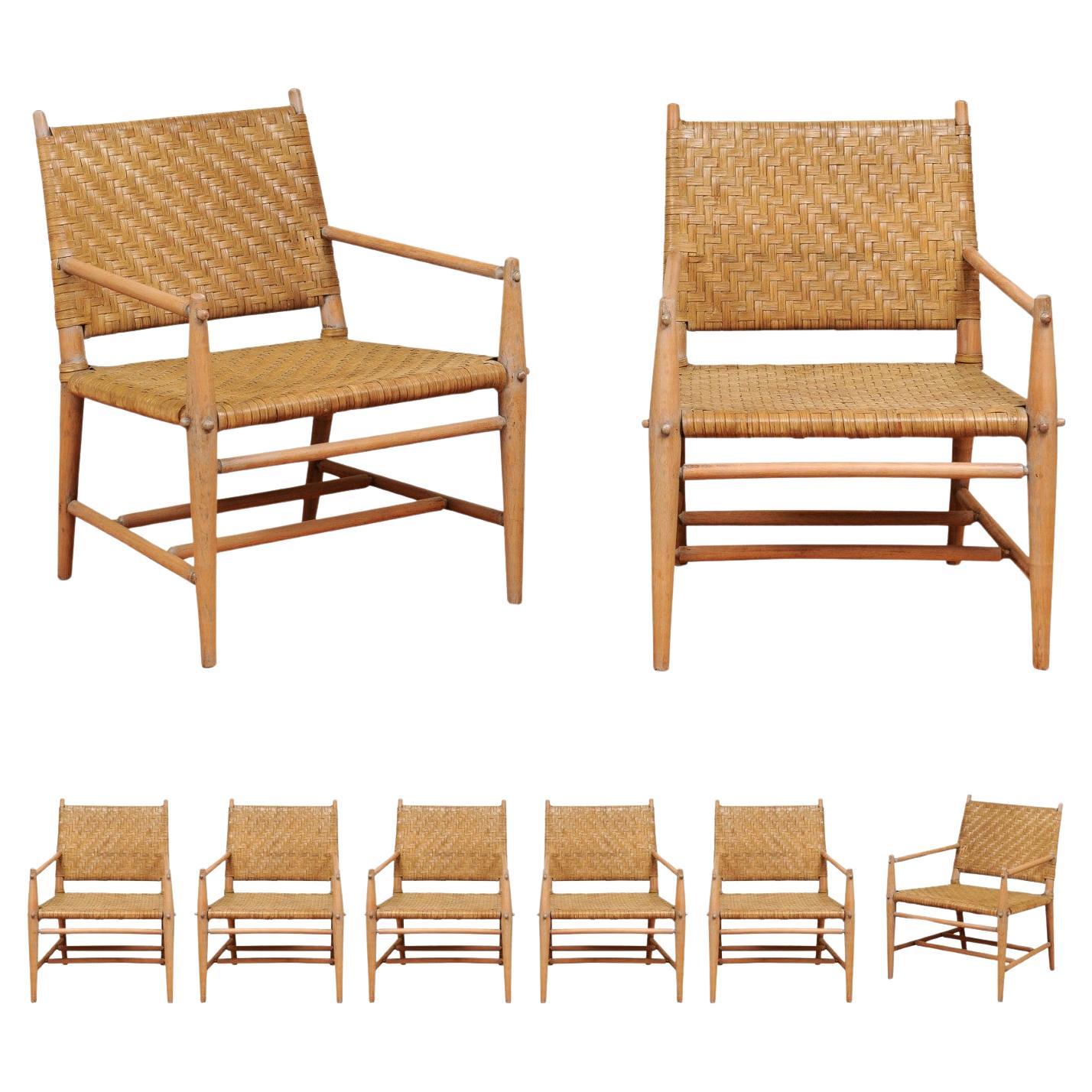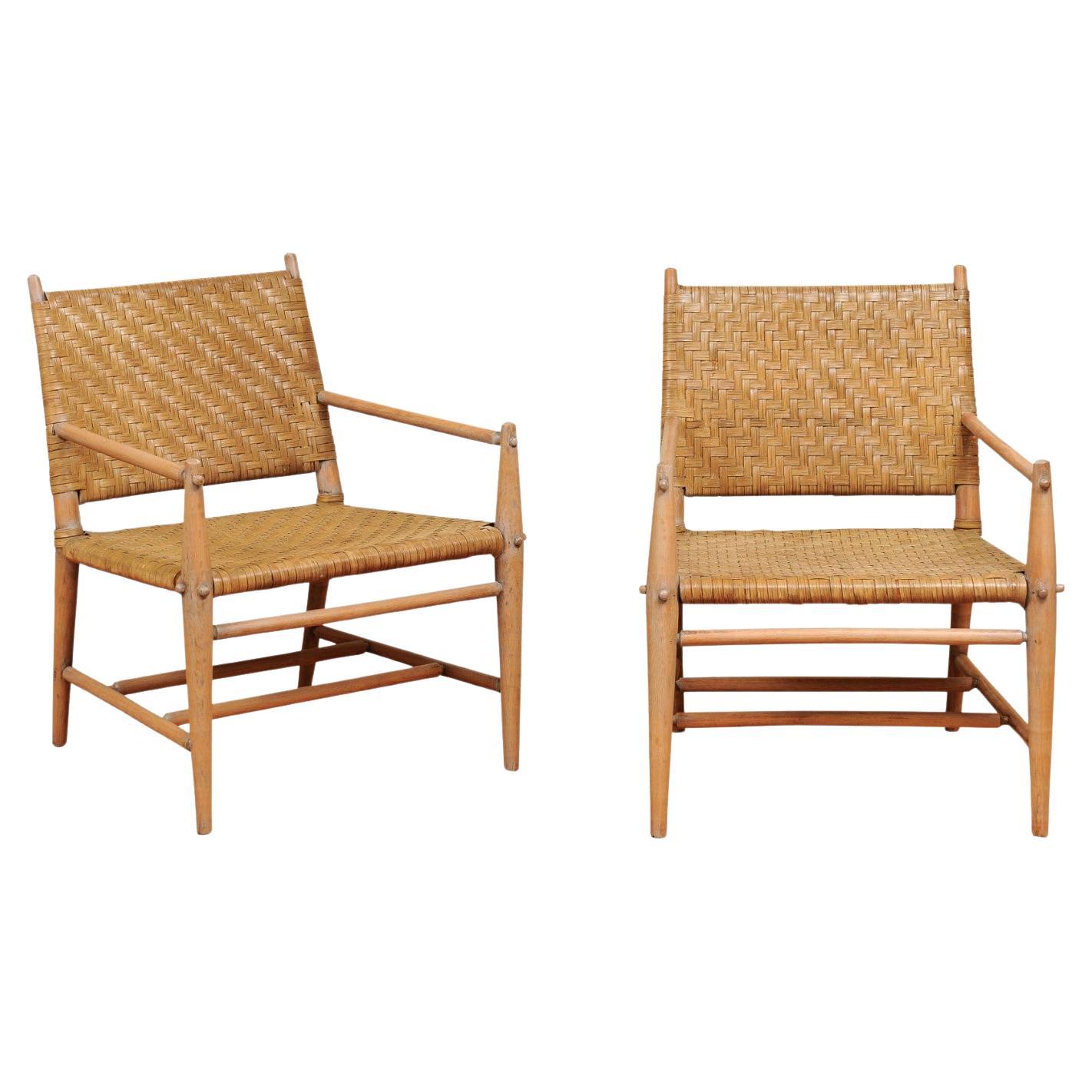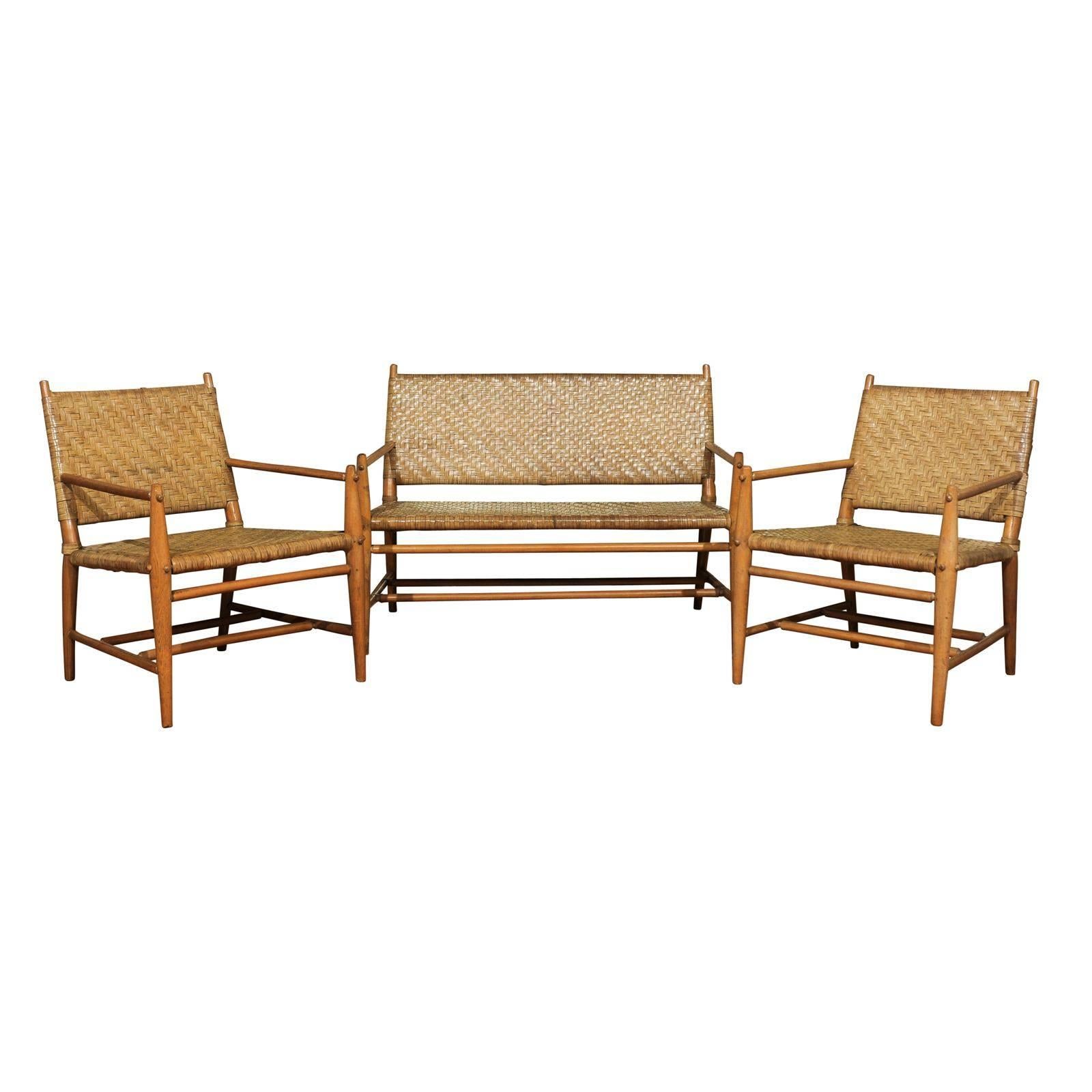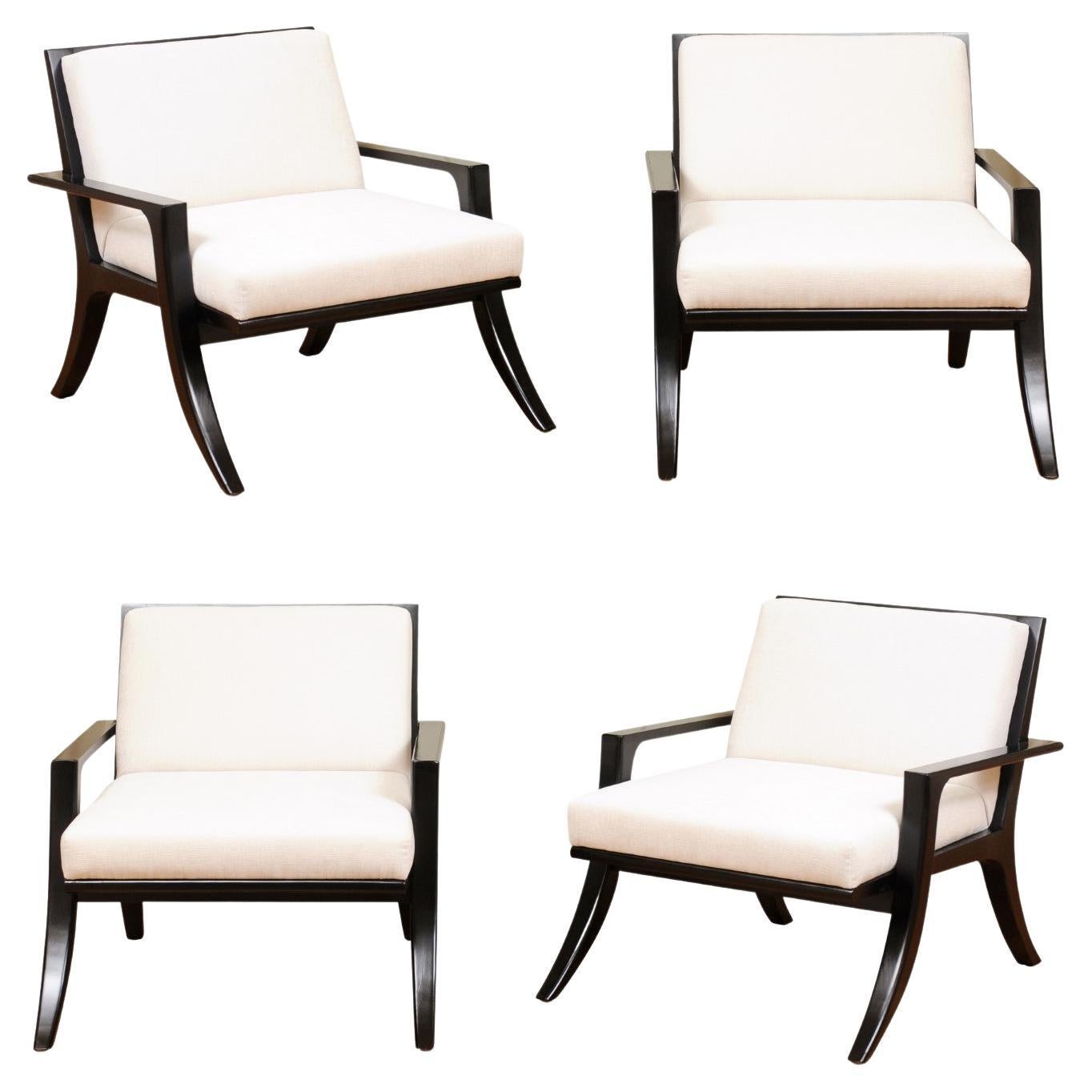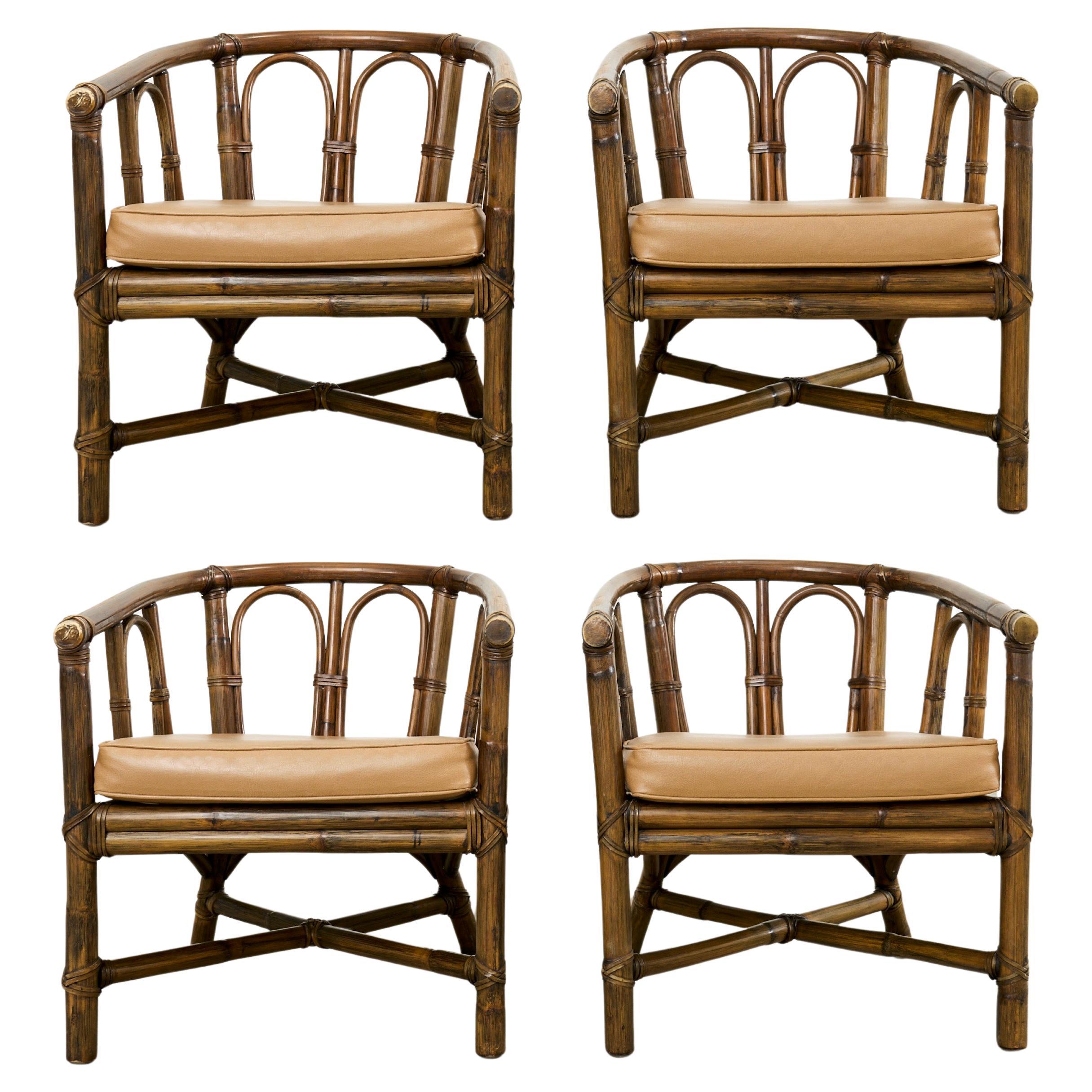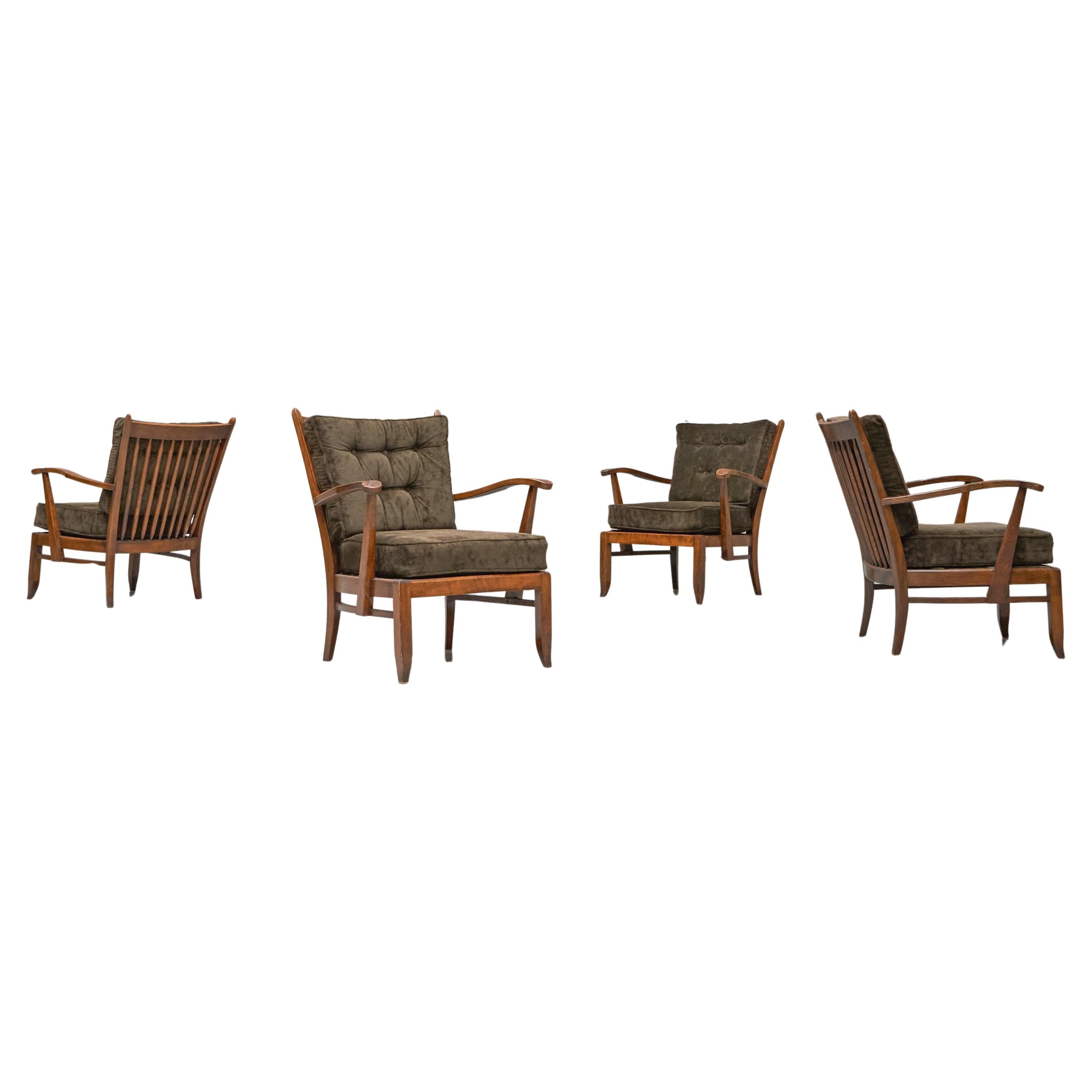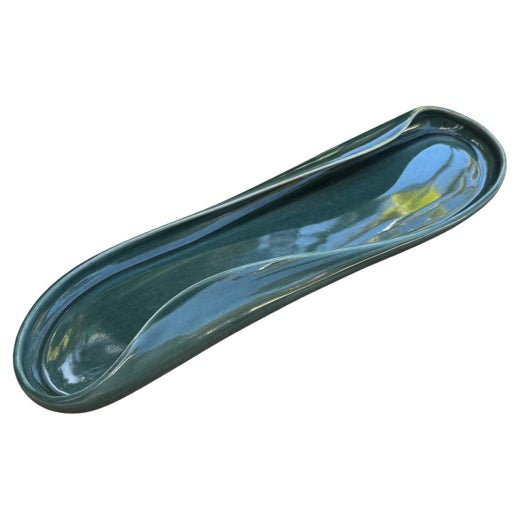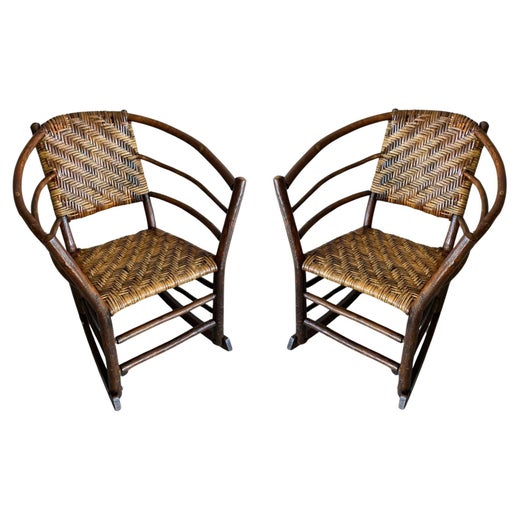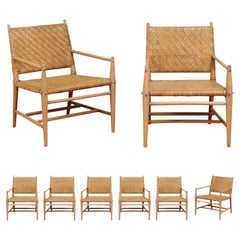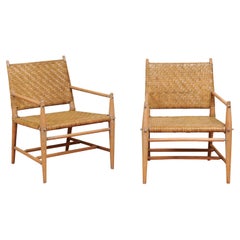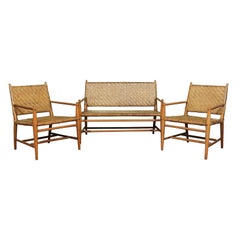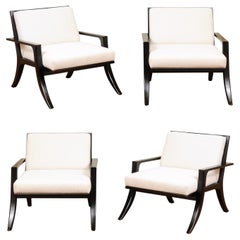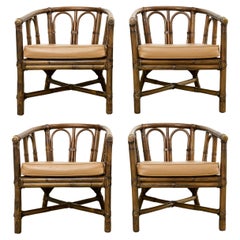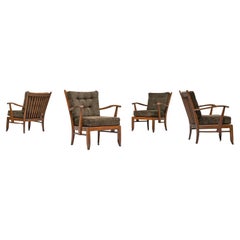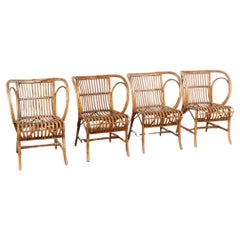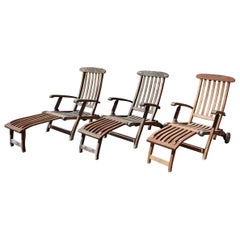Exceptional Set of 4 Cerused Oak Loungers by Russel Wright, circa 1940
About the Item
- Creator:Old Hickory Furniture Company (Manufacturer),Russel Wright (Designer)
- Dimensions:Height: 33 in (83.82 cm)Width: 26 in (66.04 cm)Depth: 25.5 in (64.77 cm)Seat Height: 17.5 in (44.45 cm)
- Sold As:Set of 4
- Style:Organic Modern (Of the Period)
- Materials and Techniques:
- Place of Origin:
- Period:
- Date of Manufacture:Circa 1940
- Condition:Refinished. Wear consistent with age and use. EXCELLENT RESTORED CONDITION. Meticulous professional restoration. ALL chairs are tight, stout, sturdy and suitable for heavy routine use. ALL raffia seats and backs on ALL chairs are intact and complete. Expert custom upholstery service available.
- Seller Location:Atlanta, GA
- Reference Number:1stDibs: LU1152241736612
Russel Wright
While industrial designer Russell Wright may be known to modern furniture enthusiasts for his streamlined end tables, dining chairs and other pieces, he is universally revered for a line of tableware he created called American Modern. Efficient, practical, and striking in their elegant forms and warm colors, the American Modern ceramic pieces, which included bowls, pitchers, dishes, and other items, became the best-selling dinnerware of all time. Today, vintage Russell Wright American Modern tableware is an evergreen favorite of art collectors and interior designers alike.
Born in 1904 in Ohio, Wright was surrounded by inspiration for the furniture he would one day design. He was raised in a Quaker household and grew up with the spare, meticulously handcrafted furniture for which the Quakers are known. As a young man, he studied art and sculpture at the Art Academy of Cincinnati and the Art Students League of New York, going on to study law at Princeton University in New Jersey. But Wright loved the arts and abandoned his pursuit of a law degree to create stage sets in Princeton and Paris alongside fellow noted designer Norman Bel Geddes.
In 1927, Wright married artist and sculptor Mary Einstein. Together, they moved to New York City, where Wright began to create sculptures. Mary convinced him to create metal bookends from his sculptures, and later, when he began to craft bar accessories from chrome, he turned to aluminum, a much cheaper material for the purposes of mass production (his barware was eventually included in the "Machine Art" show at the Museum of Modern Art in 1934, which was curated by Philip Johnson).
Mary worked on marketing Russell's products, successfully proposing everyday uses for Wright's beautifully designed housewares. She is said to have been a pioneer in the world of lifestyle marketing, coining the terms "American Modern" and "blonde" to describe the charming, light-colored maple furniture he created for Conant Ball, which was known at the time for its reproductions of American Colonial furniture.
While Wright had created some Art Deco furnishings for Heywood-Wakefield, it was this group of bedroom furniture for Conant Ball that got its name, American Modern, from Mary. Under her guidance, Wright's attractive, functional designs for the home gained renown, leading to commissions by prestigious companies like the Steubenville Pottery Company.
In 1935, Wright formed Russell Wright Associates with Irving Richards, an entrepreneur who had worked with Lightolier and would later establish Raymor. In collaboration with Richards, Wright debuted the first line of American Modern dinnerware in 1939, which was initially produced by Russell Wright Associates and then manufactured by Steubenville for two decades. The line sold over 200 million pieces during its 20 years of production. In 1955, Wright was selected by the U.S. State Department to research handicraft industries in Southeast Asia, a trip that influenced his later designs.
Throughout his life, Wright continued to design furniture and housewares, with the works' signature earth tones, curved forms, and clean silhouettes of his floor lamps, lounge chairs, and serveware remaining popular staples in American households. In his later years, he focused on designing and building his home, Manitoga, and working with the National Parks Service to develop the "Summer in the Parks" program.
Upon Wright's death in 1974, Manitoga was given to the Nature Conservancy. It was declared a National Historic Landmark in 2006 and today houses the Russell & Mary Wright Design Gallery, where many of Wright's works stand on permanent display. In 2011, stamps from the U.S. Postal Service featured Wright's image as one of the United States' twelve most influential industrial designers.
Find vintage Russel Wright lighting, seating, tables, serveware, ceramics and glass on 1stDibs.
Old Hickory Furniture Company
In the early 1890s, before his Old Hickory Furniture Company was formally incorporated, Billy Richardson was selling handmade rocking chairs in the town square of Martinsville, Indiana. His designs used hickory saplings that were the perfect combination of pliable and durable, making them ideal for creating graceful, comfortable and long-lasting furniture. This style of “twig furniture” or “rustic furniture” had become popular with the romanticization of escaping to nature in the 19th century, particularly in the Appalachian Mountains.
Reportedly, a young Richardson and his father crafted seating for president Andrew Jackson, nicknamed “Old Hickory,” for use at his Tennessee home, the Hermitage. By the end of the 19th century, Billy Richardson’s furniture had attracted such a fan base that he joined forces with other craftspeople in the area and they convened to work in an empty church, producing hickory sapling furniture full-time. Old Hickory was officially founded in 1899 and began shipping its signature hickory sapling seating and tables across the country.
Some of the company’s earliest customers were America’s National Parks, where Old Hickory’s homespun style of wooden furniture fit right in and turned out to be a sound investment. At Yellowstone National Park’s Old Faithful Inn and Glacier National Park’s Lake McDonald Lodge, the Old Hickory seating purchased in the early 1900s remains in use to this day.
That’s not to say the company hasn’t adapted over its century-plus lifetime. A look at Old Hickory’s archive is something of a trip through American furniture styles of the past century. There are knotted designs from the 1930s, chaises made of wicker (a versatile and long-lasting natural material) that recall early-20th-century resort style and Mission-style sets reminiscent of the Arts and Crafts movement.
In the 1940s, Old Hickory tapped designer Russel Wright to lend his eye to the brand. Wright’s streamlined designs married Old Hickory’s rustic sensibility with a modern aesthetic. After closing in 1978, the company underwent two acquisitions and was moved from Martinsville to Shelbyville, Indiana, where it now operates. Today, Old Hickory continues to offer an array of furniture and home accessories, primarily in the widely loved style with which it began.
Find a range of Old Hickory Furniture Company armchairs, tables and other items for sale on 1stDibs.
- ShippingRetrieving quote...Shipping from: Atlanta, GA
- Return Policy
More From This Seller
View AllVintage 1940s American Organic Modern Lounge Chairs
Oak
Vintage 1940s American Organic Modern Lounge Chairs
Oak
Vintage 1940s American Mid-Century Modern Lounge Chairs
Hickory, Oak
1990s American Organic Modern Club Chairs
Cane, Mahogany
Vintage 1950s American Mid-Century Modern Club Chairs
Brass
Vintage 1950s Unknown Organic Modern Lounge Chairs
Cane, Rattan
You May Also Like
20th Century American Organic Modern Armchairs
Leather, Naugahyde, Bamboo, Rattan
Mid-20th Century French Mid-Century Modern Lounge Chairs
Velvet, Oak
Mid-20th Century Danish Mid-Century Modern Dining Room Chairs
Bamboo
Late 20th Century English Chaise Longues
Bronze
Vintage 1960s Dutch Brutalist Chairs
Wood
Vintage 1950s Czech Mid-Century Modern Lounge Chairs
Upholstery, Oak
